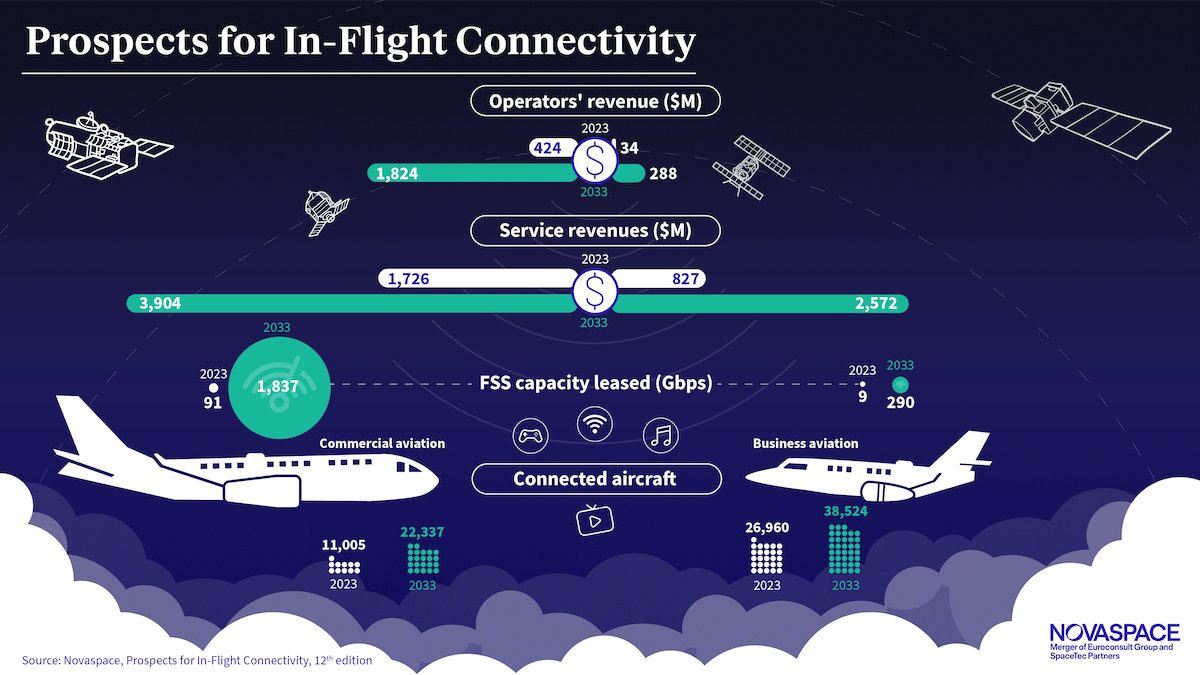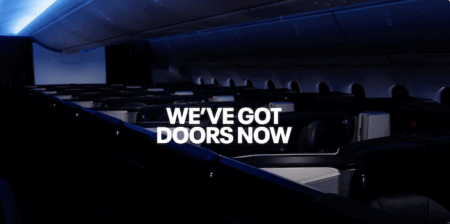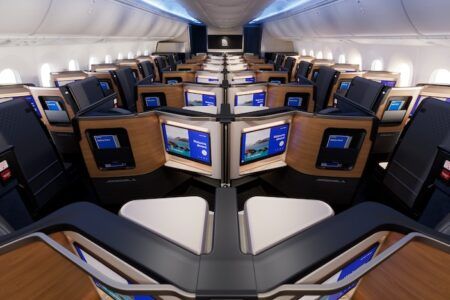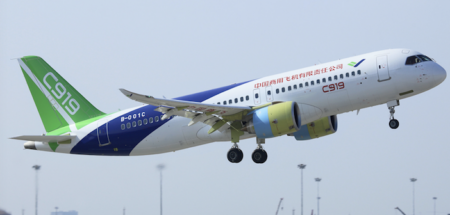The Novaspace consultancy has released its 12th annual report titled ‘New Prospects for In-Flight Connectivity’, which reveals continued growth in the market. The report highlights key global trends, including an increase in connected aircraft, the rise of Non-geostationary orbit (NGSO)-based satellite services, and the growing impact of mergers and collaborations between service providers.
The number of In-flight Connectivity (IFC)-equipped commercial aircraft surpassed 11,000 in 2023, with overall connectivity reaching 38,000 aircraft – an increase driven largely by the business and general aviation sector, which holds nearly 68% of the market. The number of connected aircraft is projected to exceed 60,800 by 2033, signalling a steady upward trend as airlines adopt new technology and service offerings.
Growth in the number of connected aircraft is slightly impacted due to some airlines migrating from existing IFC services to the new services. Novaspace anticipates that this trend will continue with the introduction of advanced technologies and an expansion of new service offerings.
We see a natural evolution in the market as airlines transition from legacy GEO-based systems to more advanced NGSO-based services and hybrid solutions. This shift is already driving significant changes in bandwidth consumption, with total leased capacity expected to rise from 90 Gbps in 2023 to a staggering 1.8 Tbps by 2033. However, it is not only the shift itself that will fuel this demand, but also the key elements within it. New technologies like GEO VHTS, NGSOs, and even hybrid solutions are enabling airlines to offer free IFC, which will further accelerate bandwidth consumption. These advancements highlight the increasing importance of connectivity in modern aviation.

Prospects for in-flight connectivity
The report underscores the impact of NGSO-based services, such as those offered by Starlink and OneWeb, which are set to revolutionise in-flight connectivity by offering greater bandwidth at reduced capacity costs. Starlink services, which entered the market in 2022, have already gained early adopters such as JSX, Hawaiian Airlines and AirBaltic. In late 2023, Qatar Airways became the largest carrier to sign on with Starlink, followed by United Airlines and Air France in 2024, who have adopted the technology for their entire fleets.
NGSO-based solutions are rapidly gaining traction, especially as airlines recognise the benefits of enhanced connectivity. Although there are thousands of aircraft already contracted, growth and large-scale deployment may take longer due to contractual terms and the need for existing equipment replacements
The report also highlights the growing trend toward multi-orbit solutions, which combine GEO (geostationary), MEO (medium) and LEO (low Earth orbit) networks to improve service reliability and coverage. Mergers and collaborations, such as the SES-Intelsat merger and the OneWeb partnership between Intelsat and Eutelsat, are expected to help reshape the future of in-flight connectivity by offering multi-orbit capabilities.
Despite the challenges of migrating to new technologies, the report remains optimistic about the future. Service provider revenues are expected to grow from $2.5 billion in 2023 to $6.5 billion by 2033, with commercial aviation contributing 60% of total revenues.
The market is clearly headed for strong growth, with both existing and emerging technologies driving bandwidth consumption and overall service improvement. The aviation sector is recognising the value of reliable, high-speed in-flight connectivity, which is quickly becoming a passenger expectation rather than a luxury.
About Novaspace
The Novaspace consultancy is the result of the merger between Euroconsult and SpaceTec Partners (a space consulting and market intelligence firm). Novaspace offers end-to-end consulting services, from project strategy definition to implementation, providing data-led perspectives on critical issues. Novaspace is headquartered in Paris, with offices in Brussels, London, Montreal, Munich, Singapore, Sydney, Tokyo, Toulouse, and Washington D.C., and has 1,200 clients in over 60 countries.





